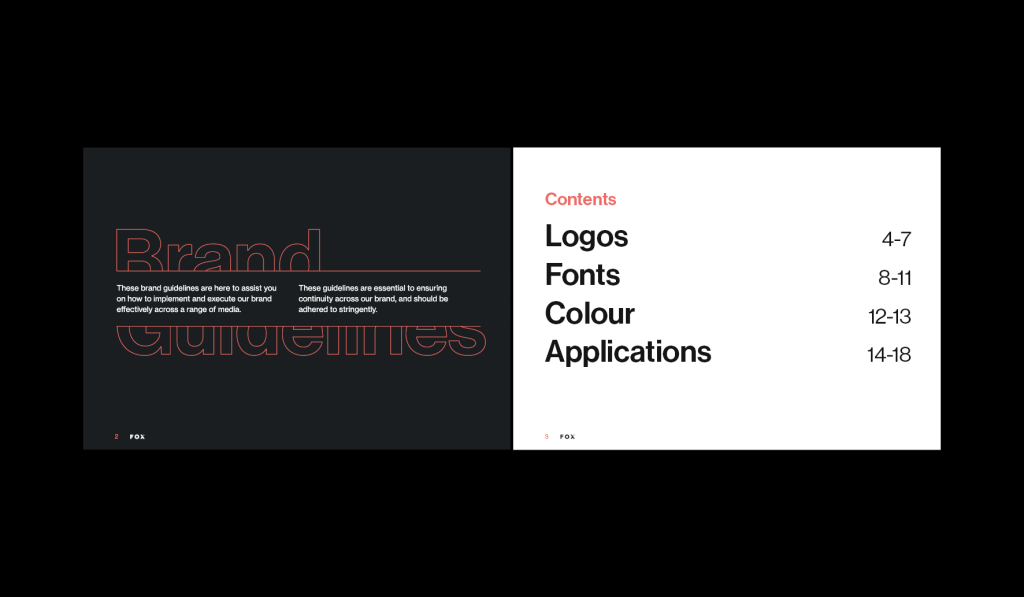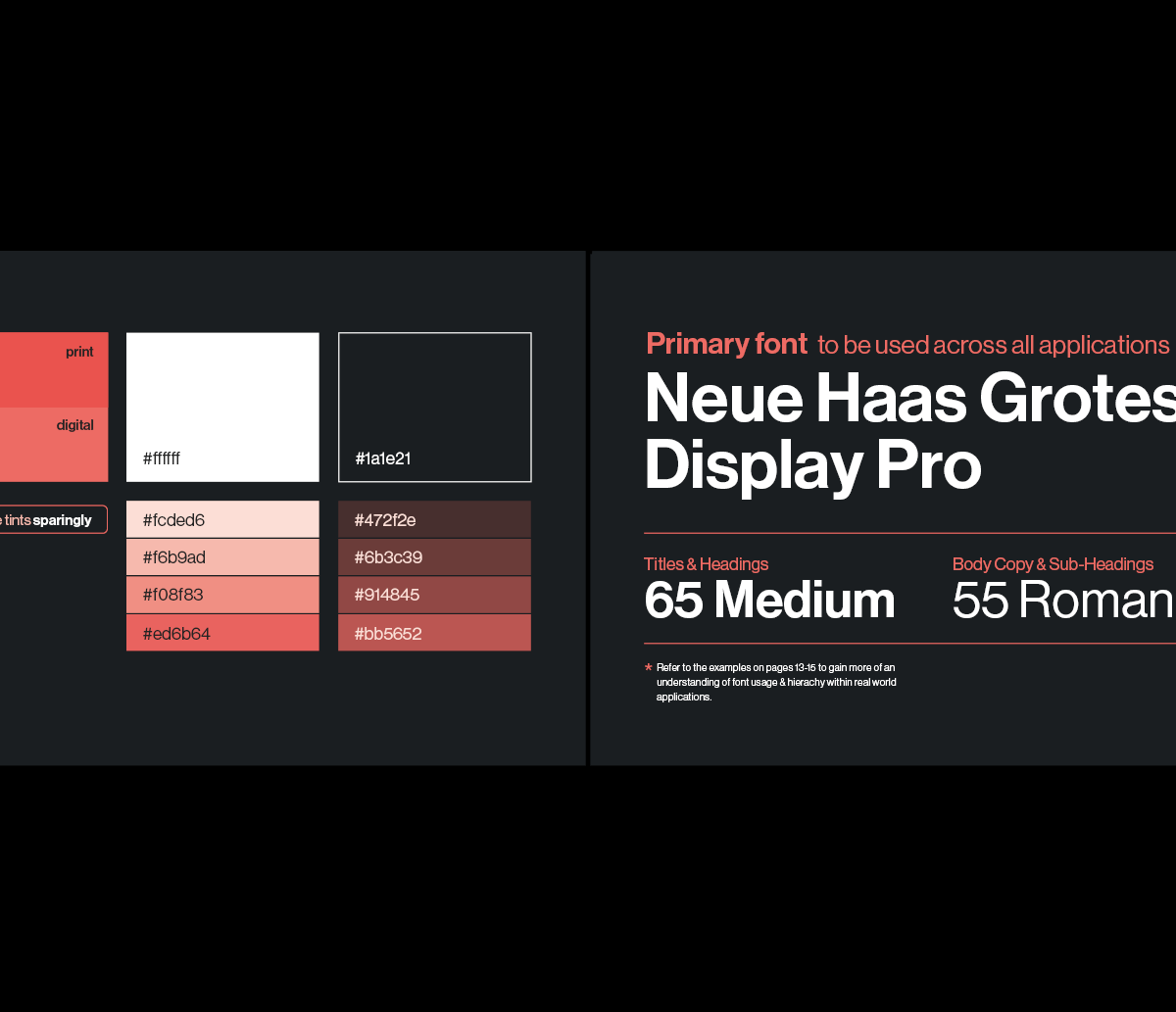
Brand guidelines are essential for any business, from small startups to large enterprises, as they define how your brand is visually and verbally represented to the world. A comprehensive set of brand guidelines ensures consistency, helping your brand build recognition, communicate effectively, and maintain professionalism. For businesses in places like Warwick and Warwickshire, where regional identity and local competition are important, clear brand guidelines can provide the framework needed to resonate with both local customers and broader audiences.
1. What Are Brand Guidelines?
Brand guidelines, often referred to as a “brand book” or “brand standards,” are a set of rules that outline how a brand should be presented across various platforms and media. These guidelines typically include:
- Logo usage: Specifications on how to use, size, and place the logo.
- Colour palette: The official colours that represent your brand.
- Typography: Fonts and styles to be used in brand materials.
- Imagery: Guidelines for image style, tone, and content.
- Voice and tone: Specifications on how the brand communicates, whether formal, friendly, or technical.
For businesses in Warwick and the surrounding Warwickshire area, brand guidelines can also include elements that reflect the unique heritage, landscapes, or values of the community, strengthening local connections and brand loyalty.
2. Consistency Across All Platforms
Consistency is one of the most significant advantages of having brand guidelines. When your brand looks and sounds the same across all touchpoints – whether it’s your website, social media, printed materials, or in-office signage – customers start to recognise and trust your brand more readily.
a. Uniform Visual Identity
A consistent visual identity reassures customers that they are interacting with the same brand, no matter where they encounter it. This includes everything from the way your logo is displayed on your website to how it appears on business cards, social media, or physical signage in your Warwickshire location. Consistency in visuals helps build brand equity, making it easier for customers to remember and return to your brand.
b. Professional Communication
Maintaining a consistent voice and tone is crucial in building rapport with your audience. If your brand’s tone is formal on the website but casual on social media, it can create confusion. Clear guidelines ensure that everyone on your team, from customer service to marketing, communicates in a way that aligns with your brand personality.
3. Strengthening Brand Recognition in Warwick and Beyond
For businesses in Warwickshire and the wider area, strong brand guidelines help solidify your brand’s presence both locally and beyond. When your brand maintains a consistent look and message, it becomes more memorable, helping to increase recognition and familiarity with local customers.
a. Building Local Loyalty
Brand loyalty is easier to build when customers know exactly what to expect. For Warwickshire-based businesses, weaving local elements into your brand identity – such as regional colours, local landscapes, or familiar language – can deepen the connection with local customers. Brand guidelines help ensure these elements are consistently present, reinforcing a sense of trust and local pride.
b. Differentiating from Competitors
In a competitive market, having a unique, recognisable brand is crucial. Clear brand guidelines ensure your brand remains distinctive in a way that customers recognise and connect with, setting you apart from competitors. Whether your brand is seen on a billboard in Warwick or a social media post across the UK, your consistency helps build a differentiated identity that others can’t easily replicate.
4. Saving Time and Streamlining Marketing Efforts
Creating a solid set of brand guidelines isn’t just about aesthetics; it also helps save time and resources. With clear guidelines, your team knows exactly what to do when creating marketing materials, onboarding new employees, or launching campaigns.
a. Efficiency in Content Creation
When you have a predefined colour palette, fonts, and logo usage guidelines, your team can quickly produce content without needing to re-approve designs every time. This is especially useful for businesses in fast-paced environments, allowing you to create cohesive marketing materials and maintain quality control.
b. Onboarding New Team Members
Brand guidelines simplify the process of onboarding new employees or external vendors. By providing them with a clear set of guidelines, they can immediately understand and apply your brand’s identity, ensuring consistency from day one. For Warwickshire-based businesses that rely on local agencies or freelancers, this consistency can make all the difference in maintaining a professional brand image across all platforms.
5. Creating Emotional Connections with Your Audience
Brand guidelines contribute to a unified brand personality that resonates with customers, creating an emotional connection that goes beyond a single purchase or interaction. Over time, customers develop an attachment to the reliability, professionalism, or warmth your brand communicates through consistent design and messaging.
a. A Recognisable Brand Personality
Customers should be able to identify your brand’s personality across every platform and medium. For example, a friendly, approachable tone might be appropriate for a local café in Warwick, while a tech company might need a more authoritative, innovative voice. Consistent guidelines help ensure that your brand’s personality comes through clearly, building familiarity and emotional engagement with your audience.
b. Building Brand Trust
Trust is built on familiarity, and familiarity grows with consistent branding. A clear, recognisable brand fosters a sense of reliability and comfort with customers, making them more likely to choose your business repeatedly. When local businesses in Warwickshire present a consistent image and message, customers come to see the brand as dependable and authentic.
6. What Should Be Included in Comprehensive Brand Guidelines?
A good set of brand guidelines should cover all the essential elements that contribute to a unified brand identity. Here are some key components to consider:
- Logo and Logo Variations: Include versions for different colour backgrounds, minimum size requirements, and any acceptable adjustments or restrictions.
- Colour Palette: List primary and secondary colours, along with HEX, RGB, and CMYK values for each, to ensure consistency across digital and print materials.
- Typography: Specify fonts for headers, body text, and any alternative fonts that may be used when your main fonts are unavailable.
- Imagery: Include guidelines for image style, colour tone, and content focus to ensure visual cohesion.
- Voice and Tone: Detail the style of language to use, from formal to conversational, and examples of how to communicate with customers in line with your brand’s personality.
- Social Media: Provide specifications for profile images, banner sizes, and tone specific to each platform.
By outlining these elements, you create a roadmap that makes it easy for anyone in your organisation to create brand-aligned materials.
7. How Brand Guidelines Benefit Long-Term Growth
Clear brand guidelines have long-term benefits that help support sustainable growth, especially as your business expands to new markets or channels. With a well-defined set of standards, your brand can grow while still maintaining its core identity, even if it evolves to meet changing customer expectations.
a. Flexibility for Future Growth
As your business grows, brand guidelines provide the flexibility to introduce new products, expand your market, or rebrand without losing brand cohesion. Whether you’re growing locally in Warwickshire or expanding to national markets, consistent branding will keep your business rooted in a strong, recognisable identity.
b. Attracting the Right Audience
Brand guidelines also help your business connect with its ideal customers by clearly communicating your values and personality. By ensuring that all visual and verbal elements align with your target audience’s preferences, you attract customers who are more likely to engage, return, and recommend your business.
Conclusion: Making Brand Guidelines Work for Your Business
For businesses in Warwick and beyond, establishing brand guidelines is a vital step toward building a cohesive, professional, and recognisable brand. A well-documented set of guidelines supports everything from everyday marketing efforts to long-term growth, allowing your brand to remain consistent and impactful across all channels. By investing in thorough brand guidelines, you set your business up for success, ensuring that every customer interaction reflects the quality and personality of your brand.
If you’re ready to create or refine your brand guidelines, partnering with an experienced graphic designer can make the process seamless and effective. Let’s work together to build a brand identity that resonates, communicates, and endures.

